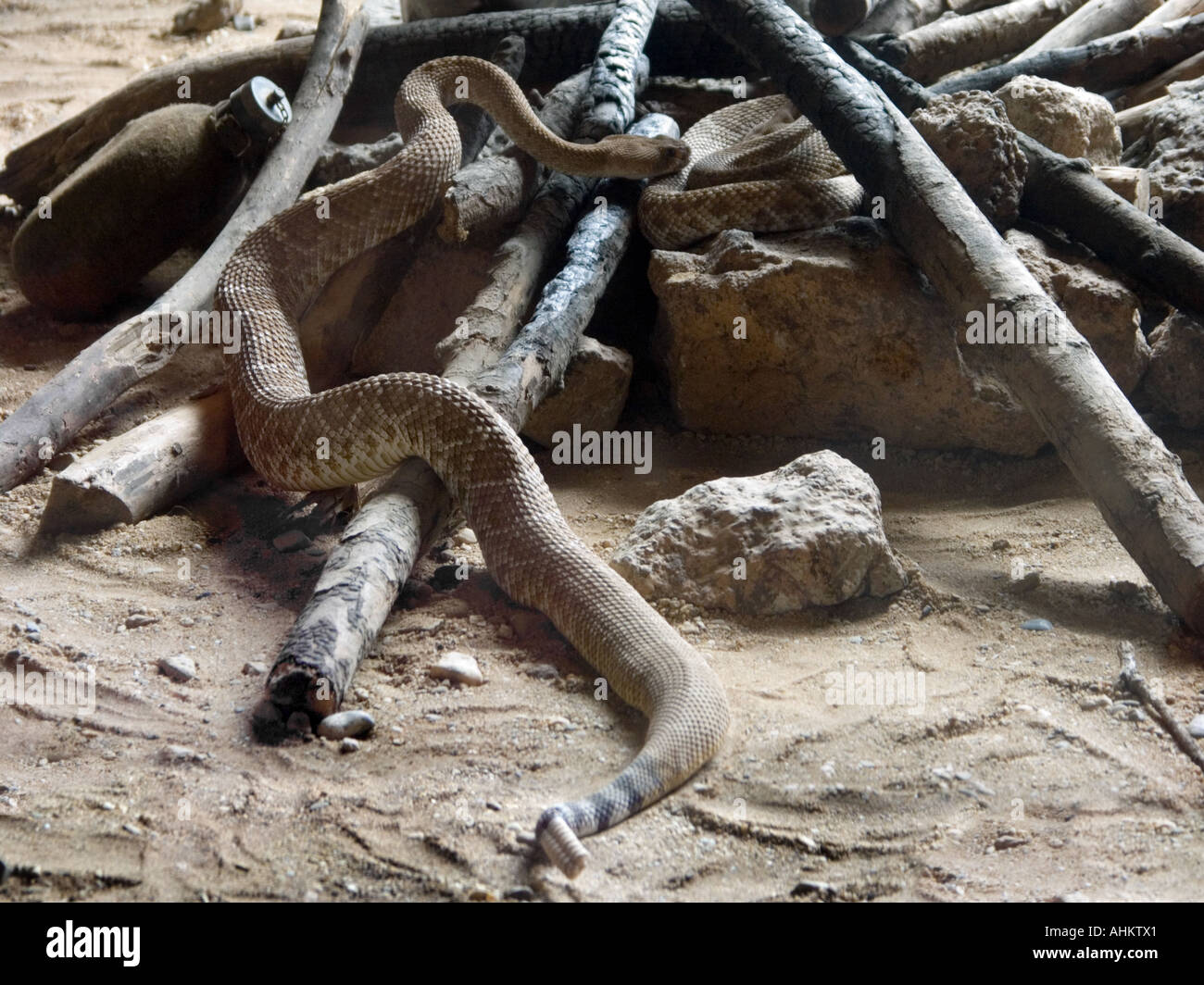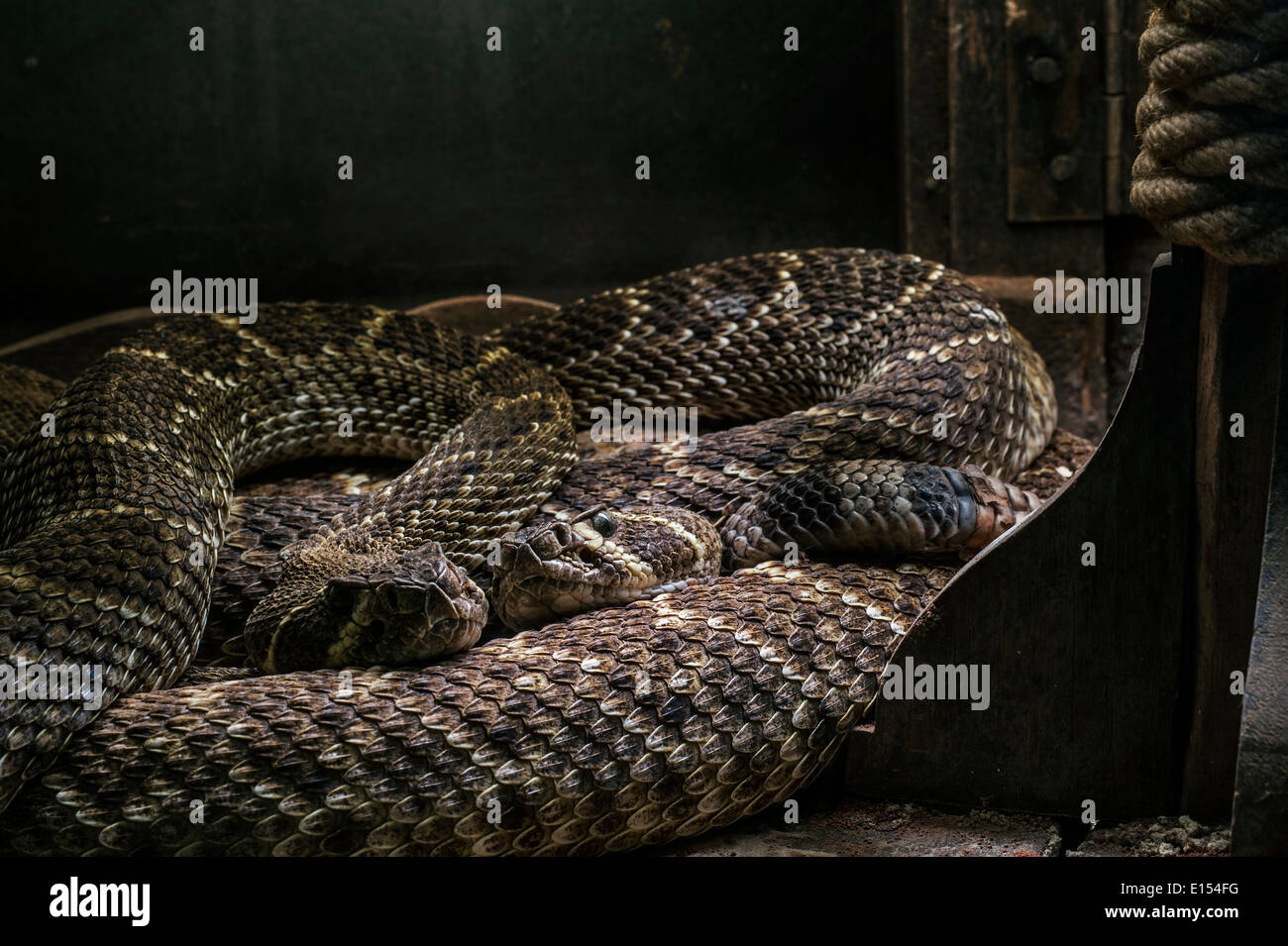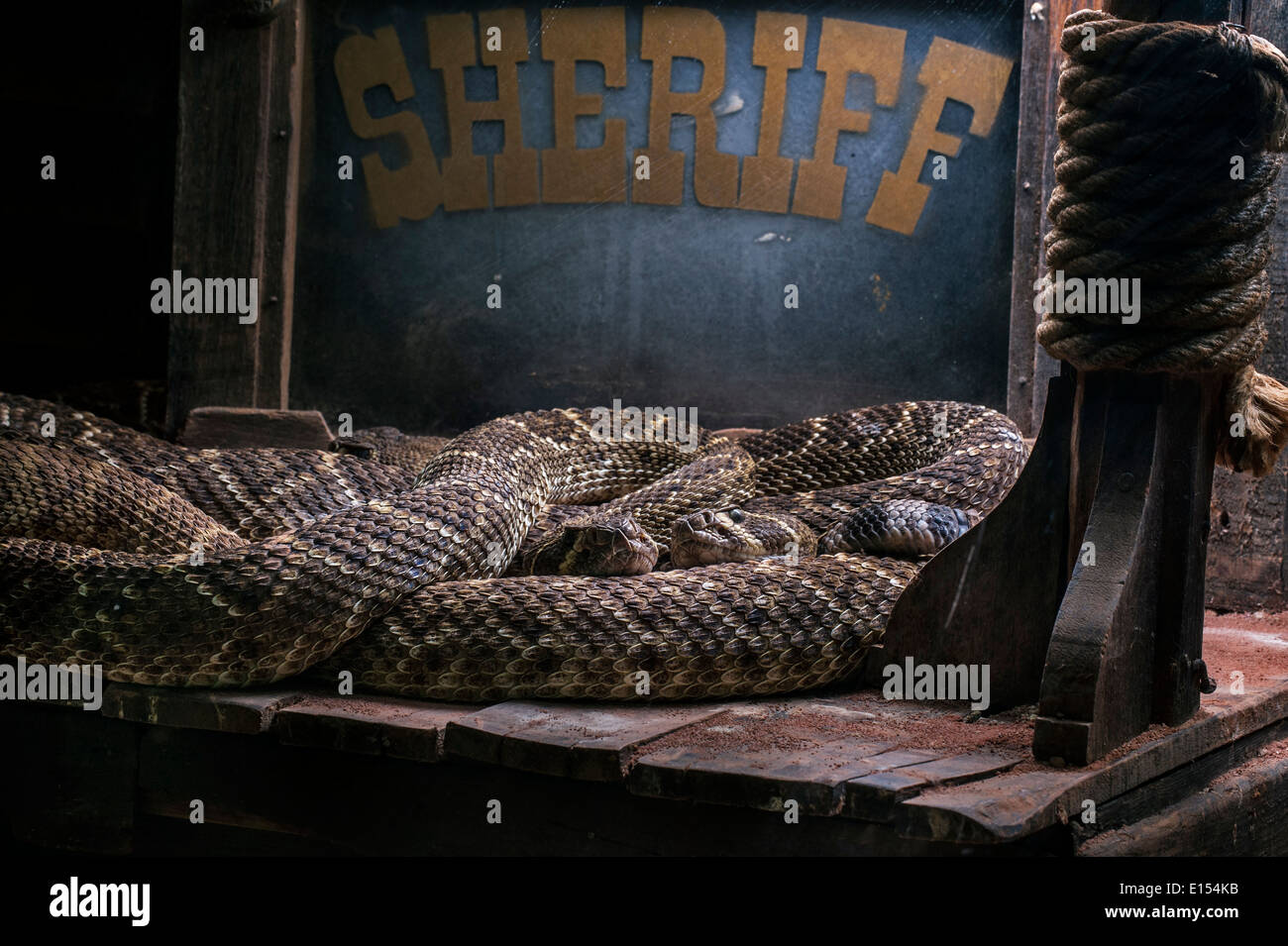The desert holds many wonders, and among its most iconic residents is the western diamond-back rattlesnake. This creature, with its distinctive markings and unmistakable rattle, truly captures attention. For anyone spending time in its habitat, understanding this snake is very important. It helps us appreciate its role in the ecosystem and, of course, stay safe.
We're going to explore what makes the western diamond-back rattlesnake so special. You know, from its appearance to its daily routines, there's a lot to discover about these fascinating reptiles. We'll also touch on how we can live alongside them respectfully.
This article aims to give you a good grasp of this snake. While I've read as much about different life experiences, including people's journeys after graduating from WGU or even their experiences with Western Dental, our focus today is entirely on the amazing **western diamond-back rattlesnake**. So, let's get started.
- Unbreakable Bond Arik Armsteads Marital Journey
- Kunle Afolayans Children A Legacy In Filmmaking
- Is Lady Gaga Pregnant
- How Old Was Virginia Madden When She Died
- Texas De Brazil Tacoma
Table of Contents
- Understanding the Western Diamond-Back Rattlesnake
- Behavior and Habits
- Coexisting with Western Diamond-Back Rattlesnakes
- Frequently Asked Questions About Western Diamond-Back Rattlesnakes
Understanding the Western Diamond-Back Rattlesnake
The western diamond-back rattlesnake, often called Crotalus atrox by scientists, is a truly remarkable creature. It's one of the most recognized snakes in the southwestern parts of North America. Its presence is a very natural part of the desert landscape, and it plays a specific role there.
Learning about this snake means looking closely at its distinct features. You know, just like someone might look at a resume when applying for a masters program nearby, paying attention to the details of this snake's appearance helps with identification. This understanding is key for anyone who might encounter one.
Physical Traits and Markings
These snakes are usually quite long, often reaching lengths of four to five feet. Some, though, can grow even larger, making them one of the bigger rattlesnake species. Their bodies are rather stout, giving them a very solid look.
- How To Spot Catfishing Lessons From A Womans Test
- Unveiling The Dynamics Of Heidi Swedbergs Net Worth From Rise To Fluctuations
- Unveiling The Truth Is Big Meechs Brother Terry Flenory
- How To Understand Chrisean Rocks Miscarriage Exploring Complex Factors
- Japanese Dwarf Flying Squirrel
Their skin color tends to be a mix of dull browns, grays, and sometimes even pinkish hues. This helps them blend in perfectly with their surroundings. The most striking feature, as a matter of fact, is the series of dark, diamond-shaped patterns that run down their backs. These diamonds often have lighter edges, making them stand out a bit.
Near the tail, you'll see alternating bands of black and white, creating a very distinct "raccoon tail" appearance. This pattern is a clear sign for identifying them. Their heads are broad and triangular, a common shape for venomous snakes, and they have vertical pupils, which is pretty typical for nocturnal hunters.
The rattle itself is, of course, made of interlocking segments of keratin, the same stuff as our fingernails. Each time the snake sheds its skin, a new segment is added to the rattle. So, a longer rattle might suggest an older snake, but it's not always a perfect measure of age, honestly.
Where They Live: Habitat
The western diamond-back rattlesnake calls the arid and semi-arid regions of the southwestern United States and Mexico home. This includes states like Arizona, New Mexico, Texas, Oklahoma, and parts of California and Nevada. You know, from Springfield to the New York Mass border, the concept of distinct regions applies to human geography, and it applies very much to animal habitats too.
They prefer rocky deserts, dry grasslands, scrub brush, and even forested areas that are not too dense. You'll often find them near rocky outcrops, in crevices, or under bushes, where they can find shelter from the intense sun. They are quite adaptable, and you might even find them near human developments, especially if food sources are nearby.
Their preference for dry, warm places means they are very well-suited to the desert environment. They can tolerate high temperatures, but they also seek shade and shelter when the sun is at its hottest. This ability to find just the right spot is key to their survival.
During colder months, they will find dens, sometimes sharing them with many other snakes, to hibernate. These dens are often in rocky areas or underground burrows. This collective hibernation is a fascinating part of their yearly cycle, actually.
What They Eat: Diet and Hunting
The western diamond-back rattlesnake is a predator, and its diet consists mainly of small mammals. This includes rodents like mice, rats, and ground squirrels. They also eat birds, lizards, and sometimes even other snakes.
They are ambush hunters. This means they will often lie in wait, perfectly still, until an unsuspecting prey animal comes within striking distance. Their camouflage helps them remain hidden, making them very effective at this hunting style.
Once they strike, they inject venom into their prey. The venom helps to immobilize and begin digesting the animal. After the prey is subdued, the snake swallows it whole. This process is a very efficient way for them to get their meals.
Like your finances, where money is currently sitting in a high yield interest savings account, these snakes have a way of processing their resources slowly and effectively. Their hunting strategy is a testament to their survival skills in a challenging environment. They are, essentially, a natural form of pest control in their areas, keeping rodent populations in check.
Behavior and Habits
Understanding the behavior of the western diamond-back rattlesnake is important for appreciating its place in nature and for personal safety. These snakes are generally shy and would prefer to avoid humans. They are not aggressive unless they feel threatened, which is a common misconception, you know.
Their actions are usually driven by survival needs: finding food, seeking shelter, and reproducing. They have a very predictable set of behaviors, which helps us understand them better. This predictability is, in a way, like the structured process of getting a job right away and becoming a leader in your district quickly thereafter – certain actions lead to certain outcomes.
Rattling: A Warning Signal
The most famous behavior of the western diamond-back rattlesnake is, of course, its rattling. This sound is a clear warning signal. The snake vibrates the tip of its tail very rapidly, causing the hollow segments of its rattle to click against each other. This creates that distinct buzzing sound.
They rattle when they feel threatened or surprised. It's their way of saying, "Hey, I'm here, and I don't want any trouble, so please back off." It's a defensive move, not an aggressive one. If you hear a rattle, it means you've gotten too close, and the snake is feeling a bit nervous.
The sound can be quite loud, depending on the snake's size and how vigorously it's shaking its tail. It's a very effective way to deter potential threats, whether they are predators or curious humans. Paying attention to this sound is absolutely crucial for safety.
Reproduction and Life Cycle
Western diamond-back rattlesnakes reproduce by giving birth to live young, rather than laying eggs. This is called ovoviviparous reproduction. The mother carries the eggs inside her body until they hatch, and then she gives birth to fully formed, live baby snakes.
Mating usually happens in the spring, and the young are born in late summer or early fall. A female can have anywhere from 10 to 20 young at a time, sometimes even more. The baby snakes are born with a small "pre-button" at the tip of their tails, which will eventually develop into their first rattle segment after their first shed.
The young are born venomous and capable of fending for themselves from day one. They do not receive parental care after birth. Their survival depends on their ability to hunt and avoid predators right away. This is a very challenging start to life, to be honest.
Daily Routines
These snakes are often most active during the cooler parts of the day, especially at dawn and dusk. During the hottest parts of the summer, they might become more nocturnal, hunting at night when temperatures are lower. This helps them manage their body temperature, as they are cold-blooded creatures.
They spend a lot of time basking in the sun to warm up, especially in the mornings. Once they've reached their preferred body temperature, they might move to a shaded spot or a burrow to avoid overheating. This careful balance of sun and shade is very important for their well-being.
During the winter, as mentioned, they will find a suitable den and enter a state of brumation, which is similar to hibernation. They become much less active and their metabolism slows down significantly. This allows them to survive the colder months until warmer weather returns. It's a very clever adaptation to seasonal changes.
Coexisting with Western Diamond-Back Rattlesnakes
Living in areas where western diamond-back rattlesnakes are present means learning to share the space. These snakes are a vital part of the ecosystem, helping to control rodent populations. Our goal should be to respect their presence and avoid conflict, which is pretty much always possible with a little knowledge.
Just like you might consider how early admissions are considered at Western for health sci, where you look at specific criteria, understanding the cues and behaviors of these snakes is a matter of careful observation and learning their "criteria" for feeling safe or threatened.
Safety Tips for Encounters
If you encounter a western diamond-back rattlesnake, the best thing to do is simply leave it alone. Give it plenty of space, at least six feet or more. Most bites happen when people try to handle, harass, or kill a snake. So, just don't do that, you know.
When hiking or walking in snake country, stay on marked trails. Wear sturdy, closed-toe shoes or boots. Avoid putting your hands or feet into places you can't see, like under rocks, logs, or dense bushes. These are common hiding spots for snakes.
If you hear a rattle, stop immediately and try to locate the snake. Once you see it, slowly back away. Do not make sudden movements or try to run. Give the snake a clear path to retreat. They are not chasing creatures, so they will usually move away if given the chance.
Keep pets on a leash in snake habitats. Dogs, especially, can be very curious and might get too close to a snake. If a snake is in your yard, it's best to call a professional snake removal service. Trying to move it yourself can be very risky.
What to Do if Bitten
Despite all precautions, snake bites can happen. If someone is bitten by a western diamond-back rattlesnake, it's a serious medical emergency. The very first thing to do is stay calm and call 911 immediately. Getting medical help quickly is absolutely critical.
While waiting for help, try to keep the bitten limb still and below the level of the heart. Remove any tight clothing or jewelry from the bitten area, as swelling will occur. Do not try to cut the wound, suck out the venom, apply a tourniquet, or use ice. These actions can actually do more harm than good, honestly.
Try to remember the color and shape of the snake, but do not try to catch or kill it. This information can be helpful for medical staff, but your safety is the most important thing. Getting to a hospital as fast as possible for antivenom treatment is the main goal.
It's a scary situation, of course, but knowing what to do can make a big difference in the outcome. Quick, calm action is very important in these moments. Learning these steps is a very practical piece of knowledge, similar to how you might prepare for an engineering acceptance at Western, knowing the steps and requirements.
Conservation Efforts
Western diamond-back rattlesnakes are an important part of their ecosystem. They help control rodent populations, which can prevent the spread of diseases and protect crops. They are not currently considered endangered, but habitat loss and human conflict are ongoing concerns.
Conservation efforts often focus on public education. Teaching people about snake behavior, how to avoid bites, and the importance of these creatures helps reduce unnecessary harm to them. Protecting their natural habitats is also key, as this allows them to thrive.
Supporting wildlife organizations that work to protect reptiles and their habitats can make a difference. Understanding that these snakes are not inherently evil, but rather wild animals trying to survive, is a big step towards coexistence. You know, just like you might use Canva to create social media posts to share information, spreading accurate facts about snakes helps their conservation.
Every effort to understand and respect these creatures contributes to their continued presence in the desert. Their survival is, in a way, tied to our willingness to learn and adapt our own behaviors when we share their space. It's about finding a balance, essentially.
Frequently Asked Questions About Western Diamond-Back Rattlesnakes
People often have many questions about these interesting snakes. Here are a few common ones:
Are western diamond-back rattlesnakes aggressive?
No, not really. They are actually quite shy and prefer to avoid conflict. They will only strike if they feel directly threatened or cornered. Their rattle is a warning sign, telling you to back off, which is their first line of defense, as a matter of fact.
How can I tell the difference between a western diamond-back rattlesnake and other snakes?
The western diamond-back has very distinct diamond-shaped patterns down its back and alternating black and white bands on its tail, just before the rattle. Its head is broad and triangular, and it has vertical pupils. Other non-venomous snakes might mimic some features, but the rattle and the specific tail banding are key identifiers. You know, like how you look for specific details when creating designs with Canva free.
What should I do if I see a western diamond-back rattlesnake in my yard?
If you see one in your yard, the best thing to do is keep a safe distance and call a professional snake removal service. They have the training and equipment to safely relocate the snake without harming it or putting anyone at risk. Do not try to handle it yourself, as that's when most bites happen, you know.
The **western diamond-back rattlesnake** is a truly fascinating part of the natural world. Learning about its habits and understanding how to act around it helps everyone. You can learn more about wildlife safety on our site, and for deeper insights into desert ecosystems, check out our other pages. It's all about living respectfully with the creatures around us.
Related Resources:



Detail Author:
- Name : Kyla Flatley
- Username : david.lubowitz
- Email : blaze.pouros@hotmail.com
- Birthdate : 1984-10-13
- Address : 728 Jessie Forks Suite 673 Fadelhaven, ID 48508-8286
- Phone : +1-564-706-4153
- Company : Lakin and Sons
- Job : Material Moving Worker
- Bio : Molestiae itaque illum labore quia aut. Sed debitis doloremque rerum nisi tempore. Consequatur illo deleniti quis qui rerum aut ab.
Socials
tiktok:
- url : https://tiktok.com/@hupton
- username : hupton
- bio : Omnis dolor reprehenderit temporibus ad voluptate assumenda.
- followers : 5951
- following : 326
facebook:
- url : https://facebook.com/uptonh
- username : uptonh
- bio : Similique ut minima nemo.
- followers : 2402
- following : 1026